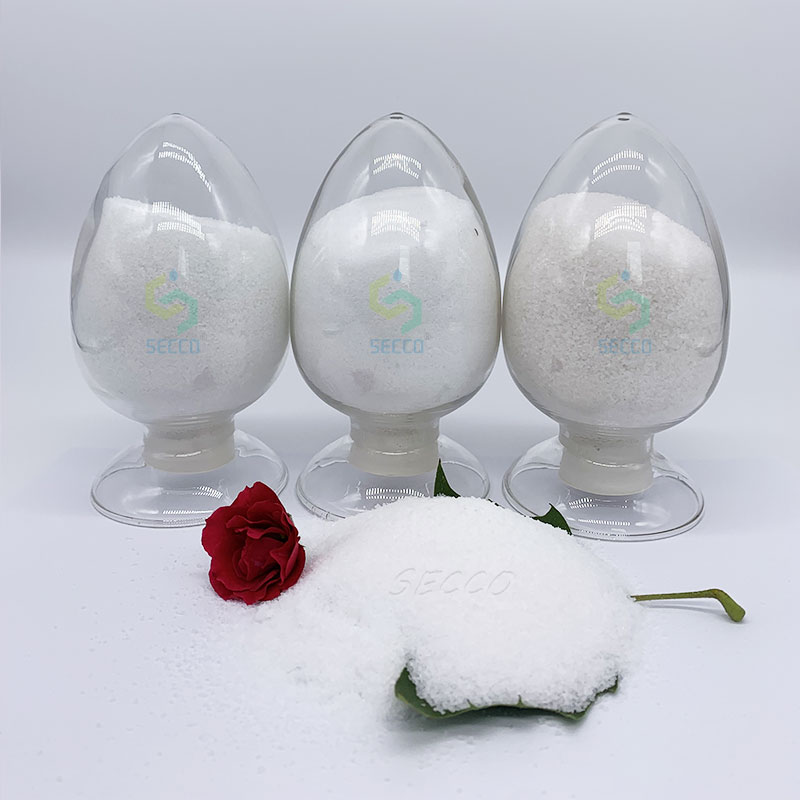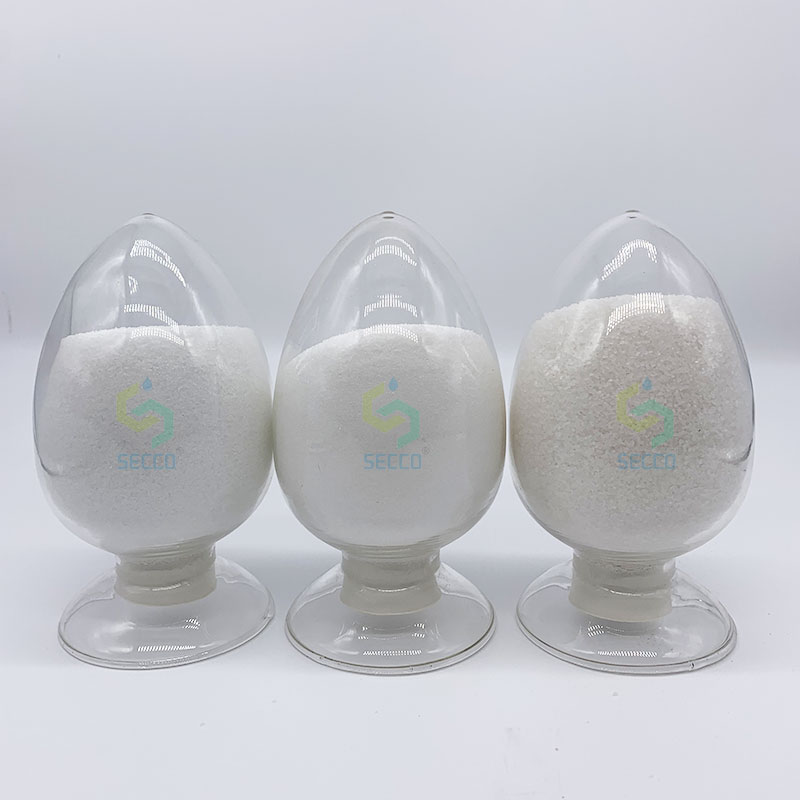The role of thepolyacrylamide(PAM) in the waste incineration process mainly focuses on the flue gas purification system, especially in the semi-dry flue gas desulfurization system. Focus eius est facere quasi flocculante ut effectum pulverem removerent. It is not directly participated in the combustion process and is not used for fly ash solidification (that is the role of cement or chelating agents).
Here are the specific functions, effects and application stages ofPAMin plant a incinerationis deserta:
Application stage: Before the dust collector after the desulfurization system of the spray drying reactor (SDA) or the circulating fluidized bed (CFB) desulfurization system
In the semi-dry desulfurization process (this is one of the most commonly used desulfurization methods for waste incineration), the lime slurry is atomized and sprayed into the reactor, reacting with the acidic gases (such as SO) ₂, HCl, HF, etc.) in gase fluminis altissimo temperaturi ut particulas salis solid as formarent (sicut CaCl) ₂, CaSO₃, CaSO₄) et limina inacta.
In ipso tempore fluxus etiam multam magnam magnam pinguinem fluxum, particulas carbon non ardentes, compoundos metallos gravos, et particulas pulchras de reactione generatae sunt.
Haec particula (particula nova ex reactione et pulvere pulvere pulvere non actione) normalmente pulcherrima sunt et difficile efficientes capere a subsequente armamento de pulvere transferentibus (sicut collectores pulvere typos saccis aut electrostaticis precipitatores).

Corea function: Flocculatio
Polyacrylamide (usually anionic PAM) is diluted and injected into the flue or reactor between the outlet of the reaction tower and the inlet of the dust collector at a very low concentration (ppm level).
PAM polymerus longus catena est. Grupos active in chaino moleculari suo (sicut amidi grupos) potent multiplicare particulas pulveres per effectos bridgendum et cargam neutralizationis (prima carga negativa PAM anionis interacta cum area positiva cargae super superficiem particularum).
Particula adsorbata adpropinquantur et congregantur magnas flocculas formare. Haec processus flocculatio vocatur.
Efecti principes:
Significantly improve dust removal efficiency: This is the most important effect. Magni floccules formati post flocculationem PAM habent magnum velocitatem et inertiam, faciliores faciliores removi a subsequentibus pulveres collectoribus saccis typis (intereptionem saccis) aut pulveres collectoribus electrostatic (charged and then capturi a electrodes). This directly reduces the dust emission concentration (particulate matter) in the flue gas.
Improvit functionem saccis filtros (pro pulveres typos saccis):
Postquam maiores floccules formaverunt, pulverem (libum filtratoris) formatum est super faciem filtratoris saccis meliorem permeabilitatem aeris, reducentem resistentiam filtrationis.
Possibilitatem particularum pulchrarum intrantem matriculam filtram aut blocantem portas filtram minima est, quod auxiliat ad extendendum vitam servitutis saccis filtrae.
Laer pulverem formatus facilius est mundari, improvisi effectivitatem mundationis.

Improvens effectivitatem removationis acidis (indirecta): Particula limina ineacta quae a flocculatione capta sunt reducent quantum effugientium fluminis. The captured lime in the dust layer on the filter bag surface of the sack-type dust collector can continue to react with the acidic gas that penetrates in (secondary reaction on the filter bag surface), further improving the overall acid removal efficiency.
Reduciens arma fertur: Minimizare operimentum subsequentum armamentorum, sicut ventilatorum inductum a particibus finis.
Improvens proprietates effusionis (potentiales): Particulae maiores per flocculationem formatae potent causare variationes in proprietatibus fisicalis effusionis pellis (sicut distributio particularum granditudinis et fluiditatem), sed hoc saepe non est principium.
Aplicatio puncti:
Selection type: Anionic polyacrylamide commonly used in waste incineration flue gas purification. This is because the dust particles (fly ash, reaction products) in the flue gas often carry weak positive charges under certain conditions (especially in semi-dry systems), and anionic PAM achieves effective flocculation through charge neutralisation and bridging action. The Cationic PAM is commonly used in water treatment, but is less used in flue gas flocculation. Nonionic type is sometimes used in specific situations.
Injectionis punctus: post turrem reactionis et ante pulverem collectorem oportet esse. Usually it is injected at the flue gas outlet of the reaction tower or in a dedicated humidification/activation reaction chamber. The injection point requires sufficient turbulence to ensure the full mixing of the PAM solution with the flue gas.
Concentratio Injection is: Dosage minima est, saepe in nivello ppm. Precise measurement and dilution systems are required. Injectione excessiva potest inducere ad murum adherendum, bloquendum, aut diminutum effectum.

Dissolution and Maturation: PAM requires a dedicated dissolution device (such as a maturation tank) for thorough dissolution and "maturation" (allowing the molecular chains to fully extend), in order to achieve the best flocculation effect. Poor dissolution will result in "fish-eye" shaped gel blocks, with poor performance and prone to clogging of pipeline nozzles.
Collaboration cum Other Agents: PAM flocculation usus in combination with lime slurry (deacidifier), activated carbon (adsorbing dioxins/ 重金属), etc. to jointly achieve the goal of fuming gas purification. Summary:
In process of waste incineration, polyacrylamide (PAM) is mainly used in the latter part of the flue gas purification system (after desulfurization and before dust removal), serving as an efficient flocculant. It achieves this by coagulating the fine dust particles (including fly ash, desulfurization reaction products, unreacted lime, etc.) in larger particles, significantly enhancing the capture efficiency of subsequent dust collectors (especially saccis-type dust collectors), thereby effectively reducing particulate emissions and indirectly improving the desulfurization effect and the performance of filters saccis. Utrum minimum est, sed effectus eius crucial est. It is one of the important auxiliary measures to ensure that the flue gas from waste incineration plants meets the standards (especially for controlling particulate concentration). It does not participate in the combustion process and is not used for the final solidification treatment of fly ash.
Si volueritis ad produktos nostros aut habere quaestiones, implete formam inferiorem, quaeso. We will contact you immediately after receiving it. Thank you for your choice.